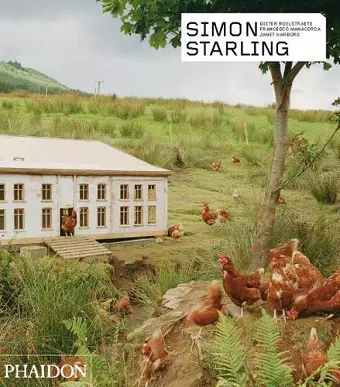Simon Starling
Janet Harbord author Dieter Roelstraete author
Format:Paperback
Publisher:Phaidon Press Ltd
Published:11th Oct '12
Currently unavailable, and unfortunately no date known when it will be back

When Marcel Duchamp shipped Constantin Brancusi's sculpture Bird in Space to Edward Steichen in 1926, New York customs officials refused to accept that it was a work of art, instead levying the standard import tariff for a manufactured object. A legal battle ensued, with the courts eventually declaring Bird in Space an artwork and therefore exempt from the tariff. Seventy-eight years later, visitors to Simon Starling's exhibition at New York's Casey Kaplan Gallery were confronted with Staling's own Bird in Space (2004): a two-ton slab of steel from Romania (Brancusi's country of origin) leaning against the gallery wall and propped up on three inflatable cushions. The United States had recently introduced a new import tax of twenty per cent on foreign metals, which Starling circumvented by labelling this unaltered chunk of European steel a work of art. Its plinth of cushioned air not only introduced a second, more representational valance to the work but also brought to bear the traditional sculptural parameters of weight, gravity and balance.
Starling's art frequently traffics in deception. It also traffics in traffic, meaning the circulation of goods, knowledge and people (usually the artist himself). Many of his works circle back on themselves, taking an idea on a journey that ends at its point of origin. Wilhelm Noack oHG (2006), for example, is an elaborate helical steel structure designed to loop a thirty-five-millimetre film of the workshop in which it was fabricated. The circuitous path that the film takes through the towering metal structure is the perfect visual metaphor for the work's own circular logic, a self-regulating system that adds up to much more than the sum of its parts.
Starling is a key figure in one of contemporary art's most significant recent developments: the linking of artistic practice and knowledge production. Although this tendency flourished with Conceptual art in the 1960s and 1970s, in recent years it has taken on a new intensity. Unlike the Conceptual artists, however, many of whom strove for a language-based dematerialized art, for Starling the object is always at the work's heart. Economies, ecologies, coincidences and convergences are all simply means to an end - although 'simply' may be the wrong word to describe the transformation of thousands...
On the Contemporary Artists Series
"The boldest, best executed, and most far-reaching publishing project devoted to contemporary art. These books will revolutionize the way contemporary art is presented and written about."—Artforum
"The combination of intelligent analysis, personal insight, useful facts and plentiful pictures is a superb format invaluable for specialists but also interesting for casual readers, it makes these books a must for the library of anyone who cares about contemporary art."—Time Out
"A unique series of informative monographs on individual artists."—The Sunday Times
"Gives the reader the impression of a personal encounter with the artists. Apart from the writing which is lucid and illuminating, it is undoubtedly the wealth of lavish illustrations which makes looking at these books a satisfying entertainment."—The Art Book
ISBN: 9780714864198
Dimensions: 290mm x 250mm x 17mm
Weight: 1046g
160 pages